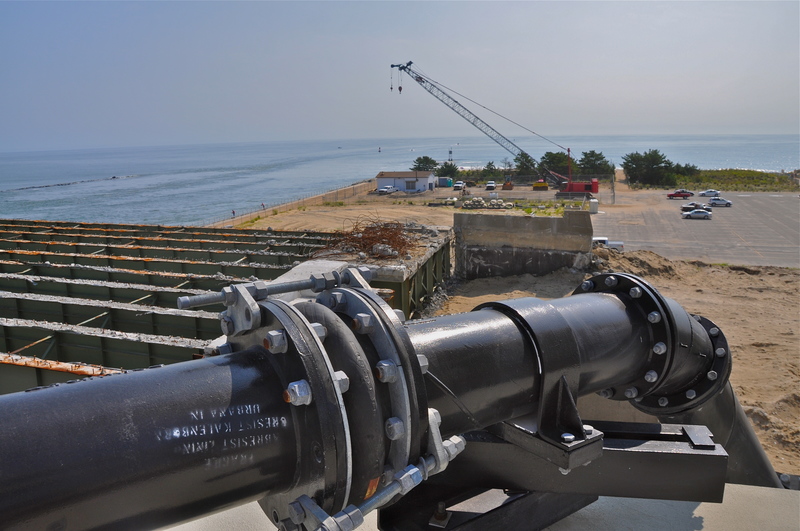Most people who travel over the new Indian River Inlet bridge are not aware a sand-pumping bypass operation is part of the project. Almost completed, the sand-bypass system is expected to be up and running by mid-September, when it normally begins each year, explained Dan Brower, program manager in the Department of Natural Resources and Environmental Control's waterways and shoreline management section.
Sand has been moved via pipeline from the south side of the inlet to the north side for more than 20 years. The pipeline was attached to the ocean-side of the old bridge, which is the same place it's attached to the new bridge.
In simplistic terms, the system is needed because man has interfered with Mother Nature.
Brower said the natural flow of sand is from south to north. Jetties constructed in the 1930s to stabilize Indian River Inlet interrupt sand flow. Sand builds up on the south side of the inlet, but a deficit develops on the north side of the inlet. Some years the sand deficit is dramatic.
“We are doing what nature would normally do on its own,” Brower said.
Because of the heavy use of the beach, which is part of Delaware Seashore State Park, pumping does not take place between Memorial Day and Labor Day.
The bypass system is made up of a crane situated along the inlet's south shore – the Bethany Beach side – that holds an eductor, or jet pump, in the surf zone. Through a pump house the sand is sucked up the eductor and pushed through a pipe attached to the bridge to the north side, where it is deposited close to the surf to rebuild the beach.
Brower said test runs of the system will begin soon and sand pumping will begin after Labor Day to rebuild the beach and dunes on the north side of the inlet.














































